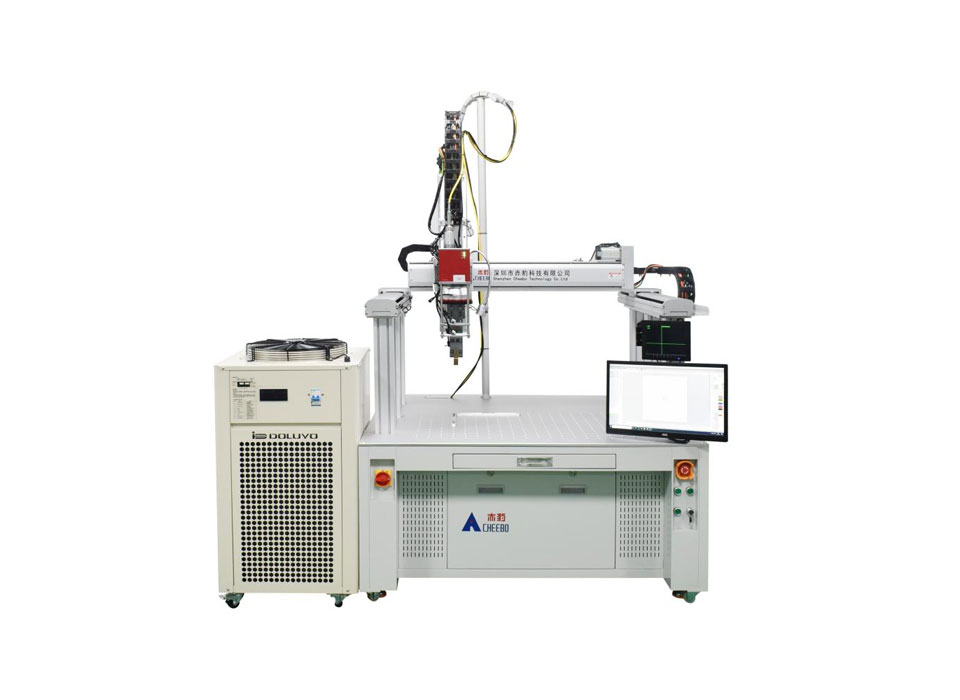
 --Home--Academy--Company News-- Comparative analysis of laser welding machine and traditional welding methods
--Home--Academy--Company News-- Comparative analysis of laser welding machine and traditional welding methodsComparative analysis of laser welding machine and traditional welding methods
2024-08-04 18:41:53
Laser welding technology, as an advanced welding method, has been widely applied in various industries in recent years. Compared with traditional welding methods, laser welding machines have many unique advantages, but there are also some limitations. This article will compare and analyze laser welding machines with traditional welding methods to help readers better understand the characteristics and applicable scenarios of these two technologies.
Firstly, laser welding machines have the characteristics of high energy density and non-contact processing, which gives them significant advantages in welding speed and accuracy. During the laser welding process, the laser beam can instantly concentrate a large amount of energy, forming a high-temperature zone, achieving rapid melting and solidification, and thus completing the welding. This high-speed welding method not only improves production efficiency, but also reduces the heat affected zone and lowers the risk of thermal deformation of the workpiece. In contrast, traditional resistance spot welding and arc welding require electrodes or flames to come into contact with the workpiece, resulting in slower welding speeds and a larger heat affected zone, leading to workpiece deformation and stress concentration.
Secondly, the fiber laser welding machine has strong flexibility and adaptability. Laser beams can be transmitted through optical fibers, facilitating remote welding and automated operations. In addition, laser welding machines can achieve precise welding of complex shapes and small parts by precisely controlling the energy and path of the laser beam. This is particularly important in high-precision manufacturing fields such as electronics, healthcare, and aerospace. However, traditional welding methods often lack flexibility and accuracy compared to laser welding due to limitations in equipment structure and operation methods.

However, laser welding machines also have their shortcomings. Firstly, the equipment cost is relatively high. The core components of laser welding machines - lasers and their supporting equipment - are relatively expensive and require significant initial investment. Secondly, laser welding has certain limitations on the adaptability of materials. Although laser welding is suitable for various metal and non-metal materials, the effect of laser welding may not be as stable as traditional methods for certain high reflectivity or high thermal conductivity materials. In addition, the operation and maintenance requirements of laser welding machines are high, and professional technical personnel are needed for management and maintenance.
Overall, laser welding machines have significant advantages in welding speed, accuracy, and flexibility, making them particularly suitable for high-precision and high-efficiency manufacturing needs. Although traditional welding methods may not be as effective as laser welding in some aspects, they still have irreplaceable advantages in specific application scenarios, such as welding certain special materials. Therefore, when choosing a welding method, various factors should be comprehensively considered based on specific needs and conditions to make a reasonable choice.
Previous:Application case of laser welding machine in automobile manufacturing industry Next:Key steps in building an efficient pack battery production line
You Can Also Search For Relevant Information Tags:
【Recommended Reading】
- 2024-11-06Introduction to the production process of battery module pack production line
- 2024-11-06What equipment is included in the battery module pack production line
- 2024-11-06Maintenance and upkeep of lithium battery spot welding machine
- 2024-11-06Working principle of lithium battery spot welding machine

 Service Hotline
Service Hotline
189-2746-5307
Shenzhen Headquarters: Block A, 3rd Floor, Building 1, Houhai Xufa Technology Park, No. 8 Zhenxing Road, Loucun, Xinhu Community, Guangming New District, Shenzhen, Guangdong Province, China
Zhejiang Office: No. 45, 6th Street, Wuzhong South Road, Changcheng Economic Development Zone, Yongkang City, Jinhua City, Zhejiang Province

 Message Inquiry
Message Inquiry





